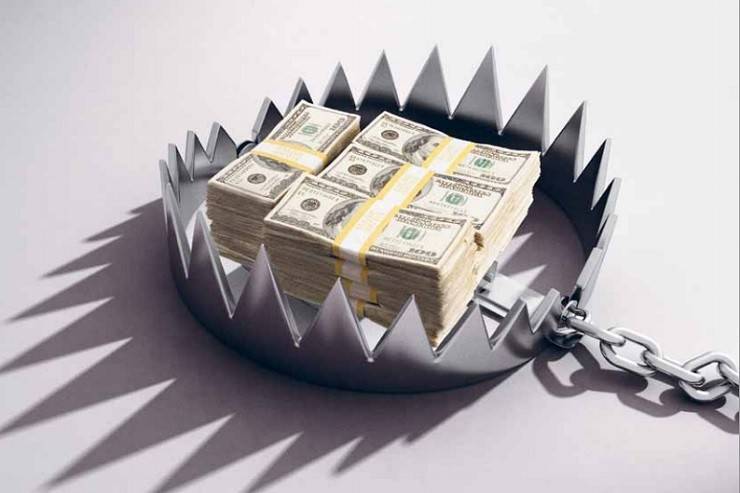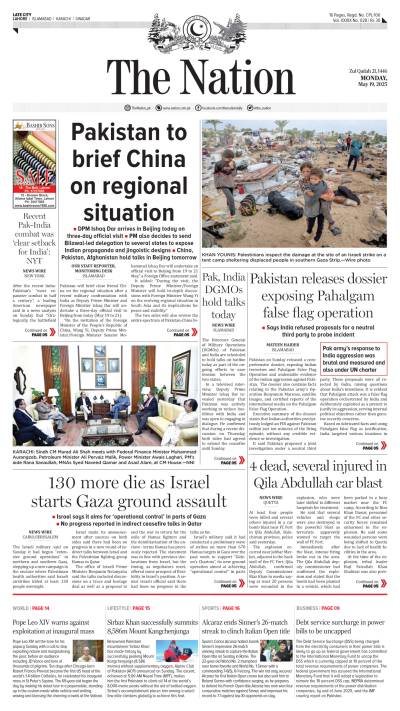So what exactly is Pakistan’s present debt profile? As per the figures released by the State Bank of Pakistan (SBP) in November 2016, the total Central Government debt as on 30.09.2016, stood at Rs19.9 trillion, ‘excluding liabilities’, and of which the domestic debt constitutes Rs14.4 trillion while external debt makes up Rs5.5 trillion. Meaning, this is excluding government’s contingent liabilities, which in their own right have swelled to nearly Rs1 trillion. What this latest debt number also means is that over the first quarter (July-September) of this fiscal year, the government added to the debt by some Rs858 billion, taking the debt to GDP ratio to nearly 69.50%, which in June 2016 stood at around 66.50%. The trend is rather alarming because despite government’s claim of being at the peak of debt’s bell curve, which theoretically meant that the national debt should have started to come down, it instead is going in the reverse direction! This, not withstanding, that when finishing the last fiscal year, the government to hide its inefficiencies had made a clever move to avert criticism over mounting debt by amending the ‘Fiscal Responsibility and Debt Limitation Act of 2005’, through a Finance Act that literally changed the debt goalposts. The Finance Ministry not only diluted the law but also got relaxed the statutory limit of restricting the public debt at 60% of GDP. Both the previous PPP government and the present PML-N governments have been in violation of this condition, but with the above master stroke the PML-N government has set a new statutory deadline of June 2018 to bring the debt back to 60% GDP level, as against the earlier deadline of June 2013.
The trouble is that Pakistan’s debt sustainability indicators have significantly worsened in the past years and especially in the last three years due to a high increase in foreign exchange and refinancing risks, which appears to be the result of reckless high cost borrowings. The average time to maturity of public debt fell in fiscal year 2015-16, which in-turn has increased the refinancing risks and similarly, the short term foreign currency debt as a percentage of official liquid reserves and net international reserves increased in fiscal year 2015-16, which in-turn increases the foreign currency risk. The government of course argues that its debt management strategy clearly sets target ranges for currency, refinancing and interest rate risks, and though quite a few indicators are currently in red, they still fall within the limits prescribed in its Medium Term Debt Management Strategy 2016-19.
It further takes heart from the some global statistics by citing that amidst a high prevalent global debt phenomenon, Pakistan’s current debt at around $73 billion (over a population base of 200 million) is still quite manageable in comparison with say for example, Greece $367 billion, Ireland $865 billion, Spain $1 trillion and Italy $1 trillion. Fine, but the underlying flaws in such an argument being that not only are all these failed economies, but also that they represent a single monetary block that gets balanced through a complex system of intra-regional monetary balancing mechanism overlooked by a rather dubiously accountable European Central bank. And then, Pakistan on the other hand is neither a European economy nor does it have the luxury of printing (at will) the second leading reserve currency of the world.
Pakistan’s debt profile presents an even bleaker picture when one starts to dissect the nature of its historical debt and the one that has been piled up in recent years. The historical debt profile has little to show for itself: national infrastructure fails to match that of any developed economy; public support systems of health, housing, utilities, education and social benefits remain unsatisfactory; stubborn poverty level stuck at about 30% or more; extremely narrow and small industrial base; and a top heavy public administration system that despite being inefficient has become further entrenched over time. To make matters worse, during the past three years, government has been on a borrowing binge, acquiring expensive foreign and domestic debt at commercial rates. Though it has repeatedly claimed that it is increasing its credit only to the extent of budget deficit requirements, the reality is quite different. For example, the increase in federal government’s debt from July-September 2016, adds up to Rs858 billion, whereas, the budget deficit in the same period was only Rs450 billion - only about half.
Now where is all this money going? It is the answer to this question that forms the real troubling part. Borrowing in itself is not essentially a bad thing as long as it can be spent in a productive manner. So, really if all these borrowing would have been put to productive use in self-sustaining projects or outlays, it would have been wonderful, because essentially the government could have claimed success in raising necessary investments and then putting them to use in a manner that not only generates growth, but also leaves the country richer in due course. Sadly, this has not been the case.
The growth continues to remain elusive at under 5% - private analysts say closer to 4% - and by all accounts unless the GDP growth rate shores up to 6.50% or beyond, the present level of debt may already be unsustainable. The problem is compounded by the fact that Pakistan’s exports are rapidly declining and foreign remittances have also slowed down considerably – both these trends are likely to continue in the near-term. Owing to slowdown in exports and provided external borrowing are not capped, Pakistan’s external debt to export ratio is projected to be at 442% by 2019-20, which obviously will make it un- serviceable. Exports, which used to finance 80% of imports in the early 2000s, now finance less than 50% of imports. Over the last decade, our exports have grown by merely 4% compared to 12% in Bangladesh and 10% in India. As for remittances, since they are negatively correlated with oil imports (bulk of remittances coming from the Gulf countries), the former are naturally slowing down due to oil prices being low. Finally, what do we have to show for these piled up liabilities? Not much: higher foreign exchange reserves that in effect represents debt; public sector enterprises with a bottom-less subsidy pit; fancy projects that continue to run in red; and a three years spending spree that belies any kind of prioritisation, transparency or accountability. IMF in its last country report opined that for a developing country like Pakistan, 50% debt-to-GDP ratio should be considered prudent level, whereas, we seem to be miles away. No marks for guessing, unless the present debt strategy is quickly re-visited, Pakistan may well be fast slipping into a debt trap!






